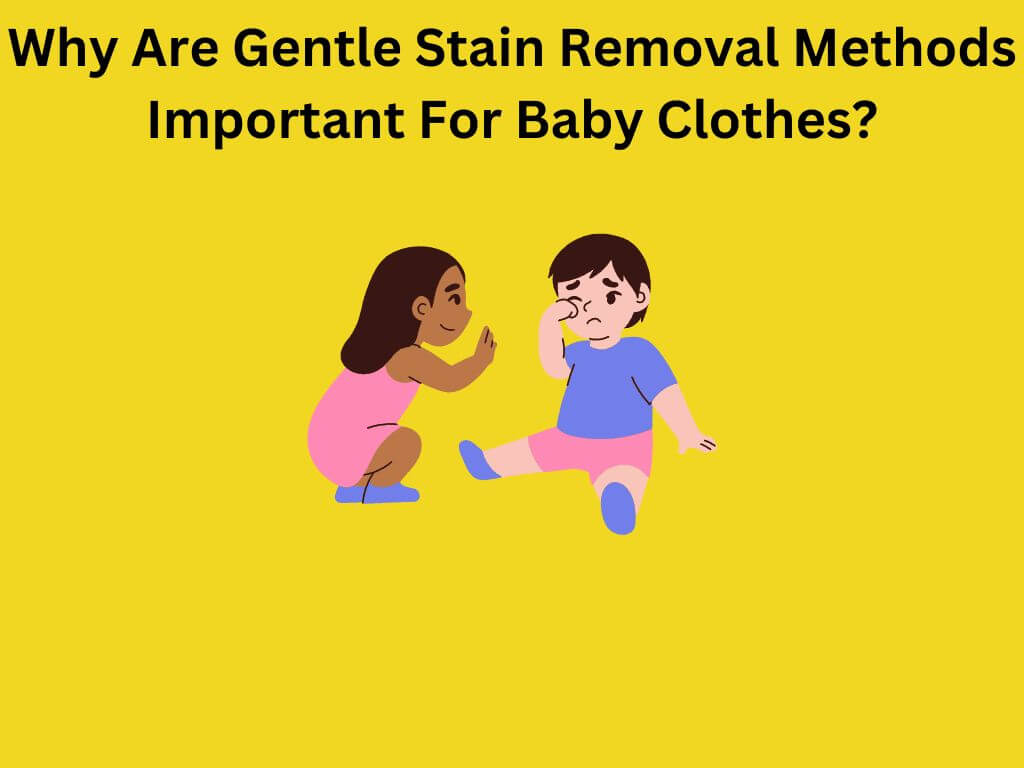Vintage garments require special care, and finding the right stain removal method is crucial to maintaining their beauty.
This article will guide you through a variety of effective ways to tackle those pesky blemishes without damaging your timeless pieces. Read on for some fabric-saving tips that really work.
Key Takeaways
- Use natural cleaners like lemon juice and vinegar to gently remove stains from vintage clothes.
- Choose specialized products such as Retro Clean and enzyme – based stain removers for tough spots on old fabrics.
- Act quickly with the right methods to treat specific stains like yellow underarm, rust, or moth holes in vintage garments.
- Avoid using chlorine bleach on delicate items; instead opt for gentle alternatives like oxygen bleach.
- Always test a small hidden area of the garment before applying any stain removal technique.
Understanding Stains on Vintage Clothing
Understanding the types of stains and factors affecting their removal is crucial for effectively treating vintage clothing. Different stains require different approaches, so it’s important to know what you’re dealing with before attempting to remove them.
Types of Stains
Stains can make vintage clothing look old and dirty. Know the kind of stain you’re dealing with to choose the right cleaning method.
- Food and Drink Stains: Spills from meals or drinks can leave marks on clothes. Use a gentle soap to treat these spots as soon as you can.
- Oil and Grease Stains: Cooking oil, butter, or makeup can create greasy patches. Sprinkle baking soda on these stains to absorb the oil before washing.
- Ink Stains: Pen leaks or marker scribbles are tough but not impossible to clean. Rubbing alcohol often helps lift ink from fabrics.
- Sweat Stains: Yellow underarm stains come from sweat mixing with deodorant. Lemon juice or Retro Clean can lighten these areas.
- Blood Stains: Small cuts might leave blood spots on your clothes. Cold water and hydrogen peroxide work well for this type of stain.
- Grass Stains: If you’ve been sitting or playing outside, green marks may appear on your clothing. Soaking in vinegar before rinsing can help remove them.
- Mud and Dirt: Outdoor fun sometimes leads to dirty garments. Let mud dry first, then brush off as much as possible before washing with a gentle detergent.
- Rust Stains: Metal objects around clothes might cause reddish-brown spots. Rust stains require special care with lemon juice or commercial removers meant for rust.
- Mold and Mildew: Damp storage spaces cause moldy patches on fabric. Vinegar mixed with water is a natural way to tackle mildew without harsh chemicals.
Factors Affecting Stain Removal
The type of stain and the fabric of the vintage clothing greatly influence how easily it can be removed. The sooner you treat a stain, the better your chances of successful removal.
Using the right products and techniques suitable for vintage fabrics is crucial in effectively removing stains without damaging the garment. Warm water and gentle treatments are effective for lifting stains from delicate vintage fabrics.
For specific types of stains like yellow underarm staining or rust stains, using specialized stain removers tailored to each type is essential for successful removal.
Natural Ways to Remove Stains on Vintage Clothing
Try using simple household ingredients like lemon juice, vinegar, and baking soda to gently remove stains from vintage clothing. These natural methods are effective at treating a variety of stains without causing damage to delicate fabrics.
Lemon juice
Lemon juice is a natural and effective stain remover for vintage clothing. Its citric acid helps to break down and lift stains, especially on white or light-colored fabrics. You can create a DIY stain remover by mixing lemon juice with water and gently dabbing it onto the stained area before washing.
The acidic properties of lemon juice make it particularly useful in treating yellow underarm staining on vintage garments, restoring the fabric to its original color.
Using lemon juice for stain removal aligns with the gentle treatment needed for vintage clothing care, ensuring that old stains are effectively lifted without damaging delicate fabrics.
Vinegar
Vinegar is a natural and effective stain remover for vintage clothing. It can help to lift and neutralize various types of stains, including yellowing and musty odors. Mix vinegar with water in a 1:1 ratio, then gently dab it onto the stained areas using a soft cloth or sponge.
Let it sit for a few minutes before rinsing with clean water. The acidic nature of vinegar makes it useful for breaking down stubborn stains while being gentle on delicate vintage fabrics.
Using vinegar as a pre-wash treatment can also help to remove rust stains from vintage fabric. Simply apply the diluted vinegar directly to the affected area and allow it to sit for about 30 minutes before washing as usual.
Baking soda
Baking soda is an excellent natural stain remover for vintage clothing. It’s gentle and effective in removing various types of stains, such as yellowing or discoloration. To use baking soda, create a paste with water and gently apply it to the stained area.
Let it sit for a few hours before rinsing. Baking soda can also help eliminate musty odors from vintage clothing by sprinkling it on the fabric and leaving it overnight before brushing off the powder.
Using baking soda can be beneficial when dealing with rust stains on vintage fabric. Combine baking soda with water to form a paste and then apply it to the rust-stained areas. Allow it to sit for some time before scrubbing gently and rinsing thoroughly.
Chemical Solutions for Stubborn Stains
For tougher stains on vintage clothing, chemical solutions like hydrogen peroxide, oxygen bleach, and chlorine bleach can be effective. However, it’s important to use these products carefully and sparingly to avoid damaging the delicate fabric.
Hydrogen peroxide
Hydrogen peroxide is a powerful stain remover for vintage clothing. It is effective in lifting tough stains and brightening yellowed fabrics. When treating stubborn stains, apply hydrogen peroxide directly to the affected area and let it sit for a few minutes before washing as usual.
For tougher old brown stains on vintage clothing, hydrogen peroxide can be mixed with water to create a stain-lifting solution. This solution should be applied carefully to avoid damaging delicate fabrics.
Always spot test an inconspicuous area of the garment before using hydrogen peroxide to ensure colorfastness.
Bleach alternatives (oxygen bleach)
Oxygen bleach, like Retro Clean, is a gentle yet effective alternative to chlorine bleach for removing tough stains from vintage clothing. This type of bleach brightens fabrics without causing damage and works well on delicate textiles.
When dealing with old and stubborn stains on vintage garments, oxygen bleach can be a safe and reliable choice. Its non-toxic nature makes it suitable for use on antique fabrics as well.
Using oxygen bleach can help in eliminating yellow stains from vintage clothes without compromising the integrity of the fabric. Ensure that you follow the product instructions carefully when using oxygen bleach to effectively remove stains without causing harm to your cherished vintage pieces.
Chlorine bleach
When dealing with stubborn stains on vintage clothing, chlorine bleach can be a powerful solution. However, it’s important to use it carefully and sparingly as it can damage delicate fabrics.
Always dilute the bleach before using it and do a spot test on a hidden area of the garment first to ensure it won’t cause discoloration or damage. When using chlorine bleach, make sure to rinse the clothing thoroughly after treatment to remove any residue and then air dry.
Remember that chlorine bleach should only be used on white or colorfast fabrics, as it can cause fading or discoloration in other materials.
Chlorine bleach is effective for removing tough stains like mildew or yellowing due to age. It’s essential to follow proper precautions when using chlorine bleach and consider alternative stain removal methods for more delicate vintage fabrics.
Specialized Products for Vintage Stain Removal
Explore specialized products like Retro Clean and enzyme-based stain removers that are designed to effectively remove stubborn stains from vintage clothing. Learn more about these effective solutions by reading the full article.
Retro Clean
Retro Clean is a popular and effective product specially designed for removing tough stains from vintage clothing. It provides gentle yet powerful stain removal, making it suitable for delicate fabrics.
This product can effectively eliminate yellow stains on vintage clothing, restoring them to their former glory. Retro Clean offers an excellent solution for launderers and homeowners looking to preserve and maintain their precious vintage garments with care.
Enzyme-based stain removers
Enzyme-based stain removers are gentle and effective for vintage clothing. They contain enzymes that break down protein-based stains like blood, sweat, and food. These stain removers are particularly useful for yellow underarm staining on vintage clothes.
Enzyme-based products can help restore the fabric without causing damage, making them a good choice for treating delicate vintage garments.
Using an enzyme-based stain remover can effectively eliminate tough stains from vintage clothing. These products work by targeting specific types of stains, making them a valuable addition to your cleaning routine for antique fabrics.
Tips for Treating Specific Types of Stains
Learn how to tackle yellow underarm staining, sticker residue, color bleeding, rust stains, musty odors, suede stains, and moth holes on your vintage clothing. Read on to discover effective stain removal methods for each specific type of stain.
Yellow underarm staining
Yellow underarm staining is a common issue with vintage clothing. To tackle this, try using Retro Clean, as it’s effective for removing yellow stains on vintage clothes. Gently apply the product to the affected area and let it sit before laundering as usual.
Remember that prompt treatment can prevent these stains from setting in. Using warm water for washing and a soft toothbrush for gentle scrubbing can also help eliminate these unsightly underarm stains, keeping your vintage garments looking fresh and clean.
Sticker residue
To remove sticker residue from vintage clothing, start by gently peeling off as much of the sticker as possible. Then, place a clean cloth under the fabric and dab the residue with a cotton ball soaked in rubbing alcohol or eucalyptus oil.
Gently rub the affected area until the residue starts to lift, then wash the garment according to its care instructions using a mild detergent and warm water. Avoid using harsh scrubbing motions that may damage delicate fabrics.
Removing sticker residue from vintage clothing requires patience and gentle treatment. By using this method, you can effectively lift stubborn residue without causing harm to your cherished garments.
Color bleeding
If you notice color bleeding on your vintage clothing, act quickly to prevent further damage. Soak the affected garment in cold water as soon as possible to stop the colors from spreading.
Then gently dab a mixture of water and mild detergent onto the stained area using a soft cloth. Avoid rubbing or scrubbing, as this can worsen the bleeding. Rinse thoroughly with cold water and repeat if necessary until the bleeding diminishes.
Remember that immediate action is key when dealing with color bleeding on vintage clothing to prevent permanent discoloration. Always test any stain removal method on a small, inconspicuous area of the fabric first to ensure it doesn’t cause further damage.
Rust stains
Vintage clothing often falls victim to rust stains, but there are ways to tackle this issue. One effective method is using lemon juice and salt or cream of tartar, which forms a paste and can be applied directly to the stain.
Another option is using white vinegar, either alone or in combination with baking soda. These natural remedies can help lift rust stains from vintage fabric without causing further damage.
For tougher rust stains on vintage clothing, you can also consider using commercial rust removers designed for fabrics. However, always test these products on a small, inconspicuous area first to ensure they won’t harm the fabric.
Musty odors
Musty odors in vintage clothing can be removed by using Retro Clean, an effective product specifically designed for treating such odors. Simply soaking the garment in a solution of Retro Clean and warm water can help eliminate musty smells.
After soaking, wash the item as usual with a gentle detergent to remove any remaining odor particles.
If you prefer natural methods, try using baking soda or activated charcoal to absorb the musty smell from vintage clothing. Place the clothing in a sealed container along with these odor-absorbing materials for a few days to freshen it up.
Suede stains
When dealing with suede stains on vintage clothing, it’s essential to act quickly. Use a soft brush or cloth to gently remove any surface dirt and then apply a small amount of white vinegar or rubbing alcohol to the stained area.
Blot the stain with a clean cloth and allow it to air dry. For tougher stains, consider using specialized suede cleaning products designed specifically for vintage fabrics.
Removing stains from suede can be challenging, but with gentle and immediate treatment, you can effectively restore your vintage clothing. Remember that prevention is key when it comes to preserving the quality of your suede garments – store them in a cool, dry place away from direct sunlight and moisture.
Moth Holes
To repair moth holes in vintage clothing, start by gently brushing the garment to remove any loose fibers. Then, use a small piece of matching fabric or a patch to mend the hole. Secure the patch in place with fabric glue or hand-stitching for a seamless repair.
Finally, store your vintage clothing in airtight containers with natural moth repellents like lavender sachets or cedar blocks to prevent further damage.
Moth holes in vintage clothing can be effectively repaired using matching fabric patches and gentle stitching techniques. Additionally, storing garments with natural moth repellents can help protect them from future damage.
Conclusion
In conclusion, vintage clothing can be effectively cleaned with natural remedies like lemon juice and vinegar. Chemical solutions such as hydrogen peroxide and oxygen bleach are also useful for stubborn stains.
Specialized products like Retro Clean and enzyme-based stain removers are gentle yet effective for vintage garment care. Knowing specific tips for treating yellow underarm staining, sticker residue, rust stains, and musty odors is crucial in restoring vintage clothing to its former glory.
With the right techniques and products, you can confidently remove stains from your cherished retro garments.
FAQs
1. How do I get stains out of vintage clothing?
You can remove stains from old clothes with gentle stain removal methods designed for vintage fabric, such as soaking in mild detergent and using soft brushes.
2. What’s a good way to clean yellow stains from retro clothing?
To clean yellow stains from vintage clothes, you can try a mix of gentle soap and warm water or special products meant for removing old stains from clothing.
3. Can I use regular cleaning methods on my antique clothing?
Antique clothing needs careful handling, so it’s best to use techniques and products made for cleaning and restoring vintage clothes without damaging them.
4. Are there any DIY tips for getting rid of rust on my vintage garments?
Yes! You can remove rust stains from vintage fabric by applying lemon juice and salt before laying the garment in the sun or using a commercial rust remover intended for textiles.
5. Is it safe to wash silk items from my collection of historical fashion pieces at home?
Stain removal tips for delicate fabrics like vintage silk often recommend spot-cleaning with gentle soap or taking the item to a professional who knows about fabric restoration.
6. Should I try to fix tears when I find them during laundry day?
For preserving your antique clothing, fixing tears is part of garment maintenance; sewing carefully or consulting a textile preservation expert is usually best.













